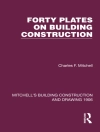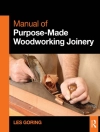This study explores the shared history of the French empire from the perspective of material culture in order to re-evaluate the participation of colonial, Creole, and indigenous agency in the construction of imperial spaces. The decentred approach to a global history of the French colonial realm allows a new understanding of power relations in different locales. Providing case studies from four parts of the French empire, the book draws on illustrative evidence from the French archives in Aix-en-Provence and Paris as well as local archives in each colonial location. The case studies, in the Caribbean, Canada, Africa, and India, each examine building projects to show the mixed group of planners, experts, and workers, the composite nature of building materials, and elements of different ‘glocal’ styles that give the empire its concrete manifestation. Building the French empire gives a view of the French overseas empire in the early modern period not as a consequence or an outgrowth of Eurocentric state-building, but rather as the result of a globally interconnected process of empire-building.
Inhoudsopgave
Introduction: Building the French empire
1 Colonial enclosure: Fortification and castles on the Lesser Antilles
2 Ambitions to empire in India: Pondichéry as an imperial city in the Mughal state system
3 Decay and repair: Fort Royal as a perennial construction site on Martinique
4 Mixed society and African “Rococo”: ‘French’ style in Saint-Louis and on Gorée Island
5 Variegated engineering: The builders of the Caribbean empire
6 Community and segregation in Louisbourg: An ‘ideal’ colonial city in Atlantic Canada
7 Motley style: Affective buildings and emotional communities on Martinique, Guadeloupe, and Haiti
Conclusion: The empire as a material construct
Archival Sources
Published Sources Bibliography
Over de auteur
Benjamin Steiner is Lecturer in Early Modern History at the University of Frankfurt am Main. He is also a member of a research group at the University of Munich












